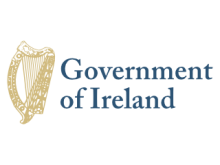Resource information
These Regulations designate a coastal area as a Special Protection Area in accordance with Article 4 of Directive 2009/147/EC of the European Parliament and of the Council on the Conservation of Wild Birds. The purpose is to ensure protection from disturbance, capture and damage to nests and eggs under Article 5 of the Directive for all species of birds, not just the birds listed on Schedule 3 (with the exception of those birds covered under Articles 7 for hunting and 9, where derogations are listed). Schedule 4 lists activities that require the consent of the Minister and may cause disturbance or damage to birds protected under Schedule 3. They include: reclamation, including infilling; introduction, or re-introduction, of plants or animals not found in the area (consent is not required for the planting of crops on established reseeded grassland or cultivated land); drainage works; harvesting marine invertebrate species in intertidal areas. Operations or activities other than those listed at Schedule 4 to these Regulations, such as effluent discharge, construction work, aquaculture, fishing or forestry require a licence or permission from the appropriate consent authority.
Implements: Directive 2009/147/EC of the European Parliament and of the Council on the conservation of wild birds. (2009-11-30)



